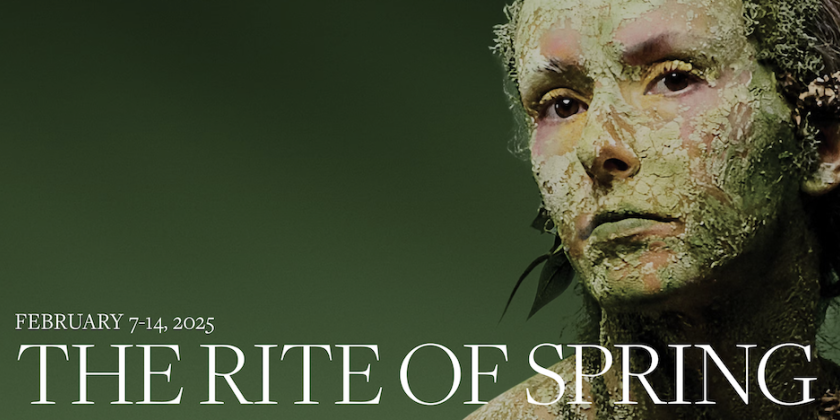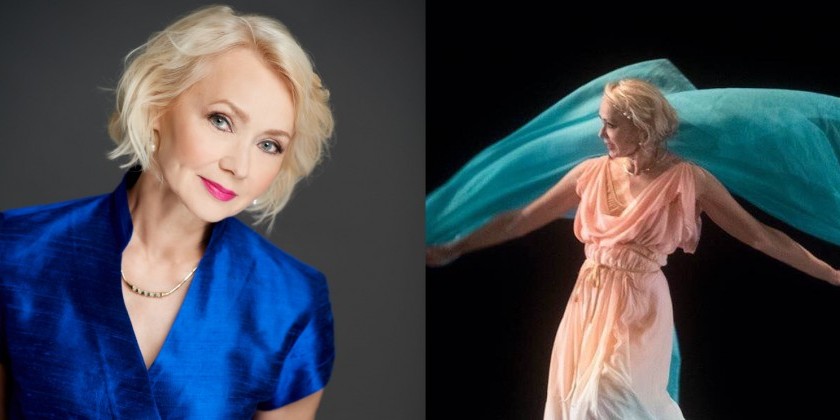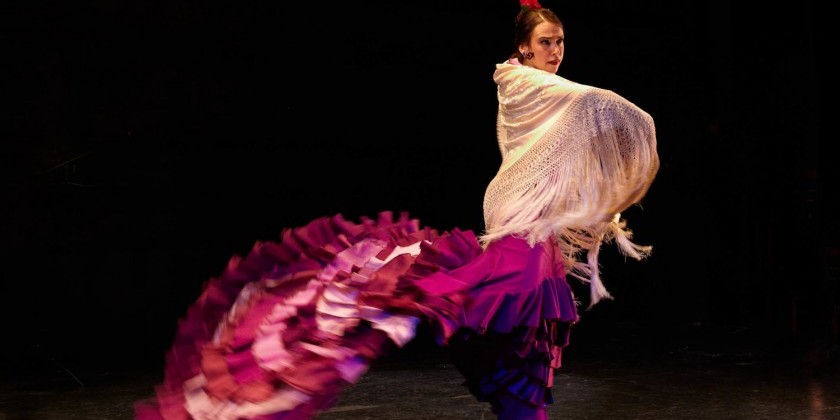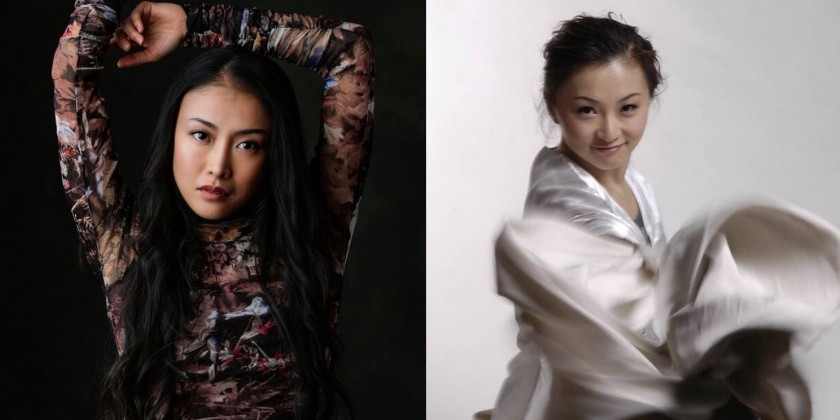Phil Chan On Penning Final Bow for Yellowface: Dancing Between Intention & Impact
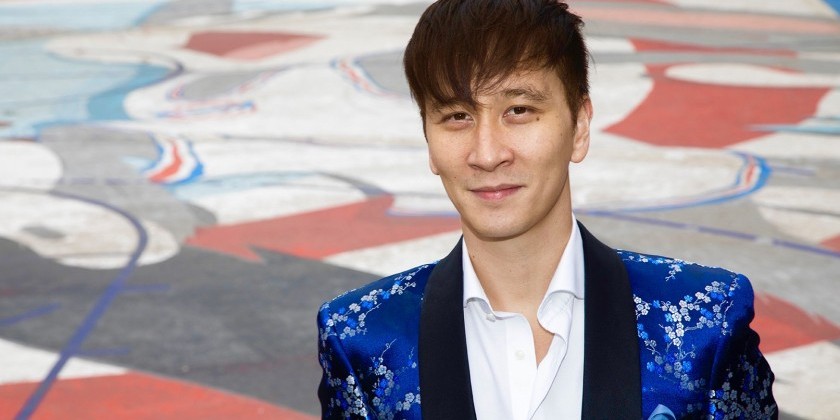
The Book's Timely Launch Also Aims To Address The Racism Asians Face In The Midst Of COVID-19
About the Artist: Phil Chan is a co-founder of Final Bow for Yellowface. He is a graduate of Carleton College and an alumnus of the Ailey School. As a writer, he served as the Executive Editor for FLATT Magazine and has contributed to Dance Europe Magazine, Dance Magazine, and the Huffington Post. He was the Director of Programming for IVY, the founding General Manager of the Buck Hill Skytop Music Festival, and the General Manager for Armitage Gone! Dance and Youth America Grand Prix. He served multiple years on the National Endowment for the Arts dance panel and the Jadin Wong Award panel presented by the Asian American Arts Alliance, and is on the advisory committee for the Parsons Dance Company. He also serves on the Leaders of Color steering committee at Americans for the Arts. He has given talks at the New York Library for the Performing Arts at Lincoln Center, the 92Y, the Guggenheim’s Works & Process, the Museum at F.I.T., the Philadelphia Academy of Fine Arts, Purchase College, and the Joffrey Ballet School, among others, and has collaborated with Ballet West, Arena Stages, and New York City Center.
Buy The Book: https://www.yellowface.org/book
Related Stories: Taking on Yellowface in Classic Choreography | At 92nd Street Y with Phil Chan & Georgina Pazcoguin
Sammi Lim on behalf of The Dance Enthusiast: A Chinese proverb I often mull over goes as follows: “儿孙自有儿孙福”(Grandchildren will have their own fortune)."
As a third-generation Chinese-Malaysian, my life is more comfortable but in some ways, more complicated than those of my parents and grandparents. How about you? I’d love to hear about your lineage. Were your ancestors also art lovers?
Phil Chan, Founder & Author of Final Bow For Yellowface: My paternal grandfather worked in a pawn shop in Hong Kong. He had two wives, and my dad was one of nine children. Growing in a cramped two bedroom apartment in Hong Kong, he came to college in a small school in rural Ohio, where he met my mom, whose family is from Ohio and Minnesota. They got married and moved to Hong Kong where they had me. I talk a little bit about this in the book, and also about how I can to terms with my biracial idenity of being "Both," not "Half." As a result, I think I bring a unique perspective to this conversation, both as someone of Chinese heritage, and also as a dancer deeply committed to preserving the tradition and heritage of classical ballet. As far as I know, there haven't been other dancers in my family, but everyone on my mom's side paints (except for me, I'm terrible). Depsite their working class background, my mom's parents had also always been been into opera and classical music, but I think i'm the only dancer.

During Fridays at Noon at the 92nd Street Y last November, you and Ms Georgina Pazcoguin addressed head-on the harmful caricatures of Asians in the ballet canon—using quite a methodological approach, no less. There were history lessons, timelines and graphs. Can dance enthusiasts expect a similar approach in Final Bow For Yellowface, the book?
Phil Chan: Yes! In order to be effective doing advocacy in a conservative art form like ballet, it's really important to really know the history and the social context in order to make solid arguements that are solutions-focused. I majored in sociology and anthropology in college, so there is a methodologal approach embedded in academia as well. But you don't have to be an anthropologist to enjoy the book. In leading the conversation, I want to make sure to use these tools to help people understand these complex issues around race and representation better, so I try to keep it simple yet effective so even younger dancers can understand. In the first half of the book, there are a lot of little case studies of how various Nutcrackers around the world changed throughout time.
I think what makes this book special is that I tried to be very honest with my shortcomings as an advocate as well, to share with readers the times when I was not successful or could have been better, in the service of others being able to learn from my mistakes. The second half of the book focuses on that. This work is hard, complex, and has a strong emotional component to it as well that cannot always be summed up neatly by a graph. I hope that by weaving in my personal story, I can fill in those gaps.

Final Bow For Yellowface is a watershed work, and one without many or any predecessors, I imagine. What sources proved useful in your research?
Phil Chan: A slew of dance scholars! First, Jennifer Fisher's book Nutcracker Nation (as well as Jennifer herself) was a wealth of knowledge. Marian Smith and Doug Fullington also helped provide invaluebale context to much of the dance history. Outside of dance, I have been influenced by a myraid of other scholars, including everyone from Clifford Geertz (who helped shape how we define and talk about culture) to Edward Said (who wrote about orientalism). I am also very inspired by playwright David Henry Hwang, whose work constantly challenges what it means to be Asian American and our place in American society. I am a big fan of how he turns how Asians have historically been represented by Westerners on its head to show how ridiculuous, cruel, and obscene it has been at times. My book is a little bit of dance history, a little bit of Asian American history, and a deep investigation of race and representation in America as someone in eye of the hurricane on this issue.
What excerpt did you read aloud at the virtual book release party at the Museum of Chinese in America (MOCA) on March 27th? Would you mind repeating it here?
Phil Chan: I read a section from the second chapter entitled "Charming to Whom?" You can also watch the full conversation with MOCA President Nancy Yao Maasbach and the my reading at yellowface.org/book.
Meeting with Peter Martins
After being led through a maze inside the Rose building at Lincoln Center, I found myself sitting on a couch in Peter Martins’ office facing a television, which was on and paused to the entrance of the “Chinese” variation from the 1992 “Nutcracker” film. The frame was an image of the first dancer entering the stage rear-end first, geisha wig and squinty smile frozen in mid-shuffle. Peter sat to my right, his assistant armed with legal pad and pen, to my left.
A former star with the New York City Ballet, and one of the most devoted Balanchine disciples, Peter began with telling me about the masses of letters he had been receiving over the years about updating the “Chinese” dance to be something more respectful. He felt boxed into a precarious situation; as the guardian of the Balanchine flame, he had a responsibility to maintain his legacy as is—which meant changing nothing. Yet he couldn’t ignore the increasing tide of resistance from his audience, and couldn’t afford to alienate his ticket and donor base. He was in a bind.
For the first time, I saw Peter Martins for what he was: not the Apollo that he often portrayed on stage, but Prometheus, the imperfect man tasked with bringing the fire from the Gods to us mortals—and keeping it alive. (And like Prometheus, Peter too suffered a price.)
He was willing to hear from me about some of the difficult history of Asians in America, with the understanding that the lived experience of Asian Americans and their families shapes how artistic works will land with them. We talked about the history of Asian representation—from political cartoons, film, and television, to the full spectrum of performing arts. We talked about Yellow Peril and the Chinese Exclusion Act, Japanese internment, the Vietnam and Korean Wars, and the emergence of a post-Civil Rights framing of contemporary Asian American identity. And within this framework, we approached the “Tea” variation in Balanchine’s “Nutcracker.” We examined three aspects of the dance: the choreography, the makeup, and the costuming.
Over the course of the conversation, it became very clear to me where “the line” is when representing another culture: it’s a distinction between caricature and character. I didn’t have a problem with Chinese-ness being portrayed on stage in little sweet candy vignettes, I just wanted to make sure that the portrayal was something authentic and positive from my culture. The coolie with his rice paddy hat, eye makeup extended to his ears, Fu Manchu mustache, and queue bobbing with every shuffle wasn’t exactly how I wanted my heritage to be portrayed. Every time I saw this dance, it felt like I was watching the schoolyard bullies who used to pull their eyes back to tease me.
So, what were some concrete things we could do? “I’ve instructed the children’s ballet mistress to tell the children playing Marie and the Nutcracker to sit perfectly still when they’re watching the variation from their throne upstage,” Peter started, “No more head bobbing!”
This was in reference to the 1993 video of Balanchine’s “Nutcracker,” which includes a horrifying moment towards the end of the variation as the male dancer is traveling upstage. As the dancers bob their heads to the music, the camera quickly cuts away to Marie, who has begun to bob her head too. See? It is “learned” so quickly!
“Why is this the only dance where the performers’ features are heavily racialized?” I asked Peter. “Let’s start with the makeup. You have so many handsome male dancers, why would you want to cover their faces with embarrassingly caricatured makeup? As an audience member, I don’t need to see a “Chinese” person literally dance Chinese. I want to see the dancer who can do the choreography the best. The costumes already make it loud and clear that this is “Chinese.” I mean, when was the last time you saw an actual Chinese person who looked like that?”
“So no mustache?” Asked Peter. “Just a simple clean face . . . Okay, that’s easy.”
“If you look at all the other dances,” I continued, “all the women have simple headdresses that differ, depending on the culture they’re representing, but when they do ‘Chinese,’ they need to wear big black wigs.”
“Oh, do the geisha wigs really have to go? But they are so charming!” His assistant, who had been silent up until this point, chimed in. “Charming to whom?” I replied. “Besides, geishas are Japanese. Couldn’t a simple and elegant Chinese headpiece also work?”
“Speaking of hats,” Peter said, “I had a few thoughts for the man.” He had in hand a few printouts of ideas from the costume shop, and handed me the first printout, a Vietnamese-style rice paddy hat that read even larger and more garish than the current one.
“Peter, that looks like it fell off a cart in Chinatown.”
“Then it’s gone!” Peter smiled and dramatically pulled the paper from my hand, crumbled it, and flung it into the wastebasket.
“I like this one,” I said, pulling up the next printout. It was a picture of a Chinese royal prince. The hat was fitted around the brim, rising upwards before closing around the top of the head, like an upside-down fez. The top of the hat included some fur trimmings, a spike.
“I like it too,” said Peter.
“But it needs to be candy too. Don’t forget we’re in the Kingdom of Sweets. Can you put some sort of confectionary detail in it to make it something more specific?”
“Also, I want black fans,” Peter said. His assistant started to scribble. “The current ones are red and have dragons on them, but we should just have them be simple and black.”
I wasn’t sure if he was paring things down, like Balanchine did with some of his early works.
“The fans are fine as is, Peter. It’s not offensive, they’re colorful and fun. Really not an issue.”
“No. I want black.”
“Okay . . . Black also works. But I would remember that it’s okay to lean into the candy fantasy. This is for children. It’s not appropriation. But it’s up to you.”
“So who do we cast? Does it have to be a Chinese person?”
“As a dancer of Chinese descent, I would hate to be forced only to dance ‘Chinese.’ If I were the only Chinese man in the company, would that mean I never get to dance the Sugarplum Cavalier? Besides, I’m too tall for ‘Chinese.’ I think the best dancer should be cast for the role, the dancer who can do the choreography the best, and just let their natural charm shine through.”
“Great. And what about ‘the fingers’?”
“Well, what else could it be?”
“We could do a stylized hand, like this,” Peter held out his arm, but flexed his hand at the wrist, yet with a soft and relaxed palm and fingers.
“That’s pretty. It’s close to Chinese dance without looking chinky. I would just see what feels right when you get in the studio.”
As we were wrapping up the meeting, I brought up his production of "The Magic Flute." Not related to the Mozart opera of the same title, Peter’s “Magic Flute” was based on an 1893 ballet with choreography by Ivanov to the music of Riccardo Drigo. Following encouragement by Balanchine to reinterpret the work, Peter’s version of the ballet first premiered at the School of American Ballet in 1983, followed by a revival at the New York City Ballet in 2010. That was the year I saw it.
The comedic plot revolves around Luke, a village boy who loves Lise, but her father wants her to marry an wealthy older man. The story is told in a series of comedic scenes involving the fairy Oberon and his gift to Luke of a magic flute, which forces listeners into a an uncontrollable frenzied dance, and then Luke and Lise ultimately live happily ever after. The ballet included a dancer in yellowface as a coolie servant, who was repeatedly the butt of slapstick and physical humor. I remember sitting in the audience feeling horrified as the 2,500 seat theater was all laughing at the silly Chink. It was by far the most uncomfortable and unwelcome I had ever felt in a space that has been a creative shrine to me for over 25 years.
During the premiere of the 2010 revival, New York City Ballet dancer Devin Alberda tweeted, “Yellowface character in NYCB’s 2010 revival of The Magic Flute is the worst thing to happen to the Asian American community since EO 9066” (a reference to the Executive Order signed by President Franklin D. Roosevelt to authorize the incarceration of the Japanese in US Concentration Camps). Instead of a frank conversation on race, the company updated their social media guidelines for what the dancers could and could not publicly say.[1]
“One last thing, Peter . . .” I felt my voice start to shake but I knew I had to get it out. “I thought your ‘Magic Flute’ was really offensive. Sitting there in the dark, seeing the only Asian representation on stage at New York City Ballet as the butt of the joke. And hearing the entire 2,500 seat theater laughing at the stupid Chink made me really sad. I didn’t come back to New York City Ballet for a few years after that, which isn’t fair—because Balanchine belongs to me too.”
“I’m really sorry,” he said, and then after a pause: “We’ll never do ‘Magic Flute’ again.”
“No, you should still do it!” I replied, “Just change the Chinese coolie part! You’re a creative guy—what else could that character be?” He looked at me and nodded, then pulled me into a hug.
There was no followup, and I haven’t spoken to Peter since. He made slight changes to all three elements (choreography, makeup, costuming), which debuted a few weeks later. The whole conversation took 30 minutes. The following week, accusations of sexual harassment and physical and verbal abuse broke in the papers, and abruptly ended Peter Martins’ tenure at New York City Ballet. No wonder he didn’t want any press about our conversation. I heard later from one of the dancers who danced “Tea” that following my conversation with Peter, he went into the studio with the dancers, told them to not do “the fingers,” then simply asked them what they felt like doing instead. Peter had heard me, or else he wouldn’t have made changes, but I don’t think he fully understood how to move forward. As a result, New York City Ballet’s current version comes across as bland: while the caricature has been stripped away, integrity with character has not been infused back into the dance to take its place.
I left the meeting and called Gina, “Holy shit Gina! I think Peter Martins is going to change Balanchine’s ‘Nutcracker’ . . . . ” In the course of our conversation, Gina and I asked ourselves: if New York City Ballet is willing to update this pillar of tradition to be more inclusive and respectful, why not every other ballet company in the country?
**Excerpt appears as courtesy of the author. © Phil Chan 2020.

The book launch coincided with a few relief efforts. You have ‘the floor’ to pitch these to our readers.
Phil Chan: I was honored to have the Museum of Chinese in America host my virtual book launch. They had suffered a terrible fire in their archives earlier this year, in addition to further disruptions due to COVID-19. Even switching all of their programming to virtual required technology and software the museum didn't previously have was a daunting challegnge.
To support this effort, I gave a copy of the book to anyone who donated $25 and up to the museum to help cover those costs, and together we raised over $2,500, more than covering the unforeseen expense to moving their upcoming programming online. I'm happy to send a copy to anyone who is still interested in donating to the museum!
I love that there is an accompanying workbook should educators wish to include Final Bow For Yellowface’s teachings in their lessons. Any takers so far?
Phil Chan: Not yet! The book just came out so many educators are still working their way through it. But I think this could be a book that not only applies to dancers, but helpful for anyone who has found themselves worried about offending someone, committing cultural appropriation, or even challenged when it comes to talking about race in your own life. I think it's probably appropriate for everyone from high school and college students, teachers and professors, balletomanes, advocates, and artistic directors alike.

This book release couldn’t be better timed: the ignorance surrounding COVID-19 has spawned much hatred towards Asians, even from Asians. Comments?
Phil Chan: It's really easy to demonize an "other" if we lack nuanced portrayals of them. If all you know about Chinese people is from the media or some leader's insistence in calling it the "Chinese virus," this two dimensional portrayal makes it really easy to resent and demonize Asians and Asian Americans. Unfortunately we have seen this all too frequently in American history, both to Asians and other groups.
What images of Asians are we reinforcing in our art and why? How does what we put on stage inform how we feel about other people and cultures?
Instead of repeating tired and outdated tropes, seeing nuanced and authentic portrayals of Asians across the media and entertainment spectrum that reflects our diverse society—which include Asian friends, family, colleagues, and neighbors—help quiet the rumblings of racism and xenophobia when they inevitably rear their ugly heads. This idea lies at the very heart of my book.








